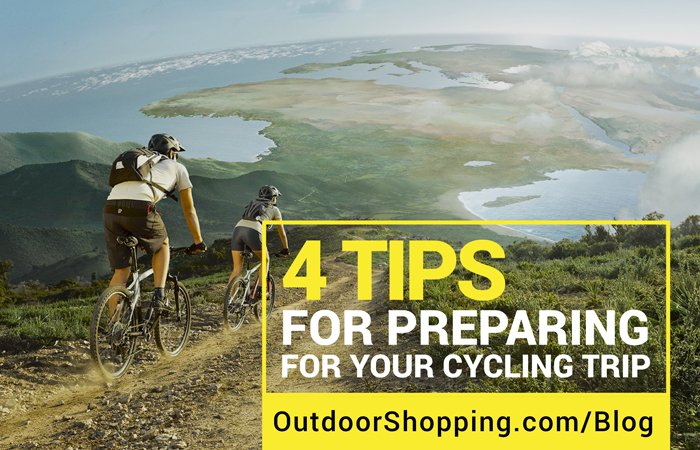4 Tips for Preparing for Your Cycling Trip

Cycling is a great way to burn off some energy, improve your fitness, and enjoy the outdoors. While it requires a little more preparation in the way of equipment than, say, running; cycling is still a reasonably simple way to experience the outdoors while exercising. Novices and veterans alike may find themselves falling prey to many common cycling mistakes, though, which can impact your comfort and safety. Here are four ways that you can improve your cycling experience!

Tip #1: It’s not just about the bike!
Sure, your cycle is an integral part of your cycling experience, but it’s not the only piece of equipment that you’ll need to make the most of your trip. Choosing the right apparel and accessories can make a world of difference. Don’t forget some of these must-have essentials when planning your trip:
Remember to choose apparel with wicking properties to help moisture pull away from the skin for easier evaporation. Opt for comfortable shoes that work with your cleats and match your riding style. And check out accessories like gloves, hats, arm/leg warmers, and face masks depending on your specific cycling conditions and needs.
Tip #2: Eat more than just bars and gels for energy.
Sure, bars and gels are great for boosting energy and helping you reach peak performance, but there are certain conditions where bars and gels simply aren’t going to cut it. For instance, consuming bars, gels, and even some energy drinks can cause severe gastrointestinal distress in hot weather. Stock your pack with some of these foods for quick energy, but don’t forget to eat other items as well to ensure that you’re getting a well-rounded diet. And while salt, sugar, and fat may seem like the trifecta for foods to avoid, they’re essential at least in small doses. Plan your rides to finish with a protein-rich meal, and wait three hours between a large meal and hitting the bike to avoid disaster.
Tip #3: Pace Yourself.
Sometimes you’ll find yourself skipping a day of cycling and then doubling up the next to compensate, but this can break your consistency and cause your routine to suffer (as well as your body!). The same goes for planning your routine in a way that is consistent but also isn’t plateauing. It’s a fine balance to strike, so make sure that you’re at least riding frequently, even if your ride is shorter than you’d like. Remember to take recovery days, and make sure to include bouts of long distance cycling with shorter rides with higher intensity as well to keep your body evolving for peak cycling performance.
Tip #4: Don’t forget your upper body workouts.
Cycling tends to put a lot of emphasis on the lower body and within only one plane, so many times other areas will get left in the fitness dust. Your upper body should also get a regular workout to keep things even, and don’t forget that even though your legs may be bulked for cycling, they still need a little workout on your range-of-motion for your hips and legs as well.
















